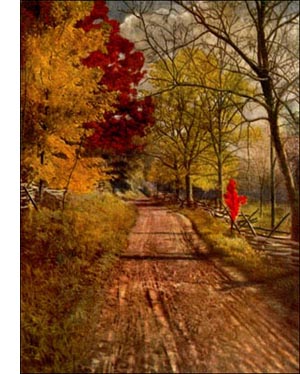Mountain Hemlock Tree
 Mountain Hemlock (Tsuga Mertensiana, Sarg.)-A broad, open pyramidal tree, 75 to 100 feet high, with much-branched, often prostrate limbs. Bark cinnamon red, furrowed, scaly. Wood light, soft, brownish red, close grained, weak. Buds brown, small, pointed. Leaves not 2-ranked, rounded below, flat, often grooved above, petioles set on prominent bases, colour, blue-green. Flowers : staminate blue, pendant on stalk; pistillate erect, with purplish or yellow bracts. Fruit oblong cones 1 to 3 inches long, borne on upper branches; scales broad, entire, striate, yellow or purple, turning out and back at maturity. Preferred habitat, high, rocky ridges in exposed situations. Distribution, southeastern Alaska to British Columbia; south to central California, Montana and Idaho. Uses: Wood occasionally used in building and bark in tanning.
Mountain Hemlock (Tsuga Mertensiana, Sarg.)-A broad, open pyramidal tree, 75 to 100 feet high, with much-branched, often prostrate limbs. Bark cinnamon red, furrowed, scaly. Wood light, soft, brownish red, close grained, weak. Buds brown, small, pointed. Leaves not 2-ranked, rounded below, flat, often grooved above, petioles set on prominent bases, colour, blue-green. Flowers : staminate blue, pendant on stalk; pistillate erect, with purplish or yellow bracts. Fruit oblong cones 1 to 3 inches long, borne on upper branches; scales broad, entire, striate, yellow or purple, turning out and back at maturity. Preferred habitat, high, rocky ridges in exposed situations. Distribution, southeastern Alaska to British Columbia; south to central California, Montana and Idaho. Uses: Wood occasionally used in building and bark in tanning.This hemlock, which has been variously called a spruce, a fir and a pine by botanical explorers, is not likely to be exterminated by lumber companies, for it grows in inaccessible mountain fastnesses, and battles with storms to the very timber line. " Between 5,000 and 7,000 feet above the sea on ridges and along the margins of alpine meadows in groves of exquisite beauty, and pushing the advance guard of the forest to the edge of living glaciers"-thus Sargent describes the habitat of the tree which he considers "the loveliest cone-bearing tree of the American forest."
During the larger half of each year the mountain hemlocks are buried in snow, their tough limbs cramped beneath their burden; but with summer comes freedom, and these limbs are flung out again with singular grace to brave the lashing of the winds. A tall tree in the humid lowlands, the trunk diminishes with the ascent of the mountains. At an altitude of almost 10,000 feet the treetop rests upon the ground, a flattened mass of graceful limbs, the trunk practically eliminated by natural selection.
John Muir, describing the forests of the Yosemite Park, tells how the young trees of the lower levels receive the light burden of the first snow in the early autumn, and gradually bending under the load left by succeeding storms, at length form graceful arches, and are buried from sight for five or six months. He has ridden for miles over a smooth snow bank that covered in this fashion trees 40 feet high. They return to their normal position, unharmed, when the snow goes off.
The blue-green foliage, the whorled leaf arrangement, the triangular leaf itself, pencilled with white on all sides, and the large cones-all set this hemlock in a class by itself. The spray, exceedingly beautiful, even for a hemlock, bears flowers that are unusual in their rich colouring. The pistillate blossoms are royal purple; the staminate, blue as forget-me-nots-" of so pure a tone that the best azure of the high sky seems to be condensed in them."-Muir.
Seeds of this alpine hemlock planted in England and in our Eastern States grow slowly, and show none of the grace and vigour of the wild sapling trees. It is the old story of the hardy mountaineer, languishing in luxury, dying of homesickness for the life of abstinence and struggle to which its race is born.